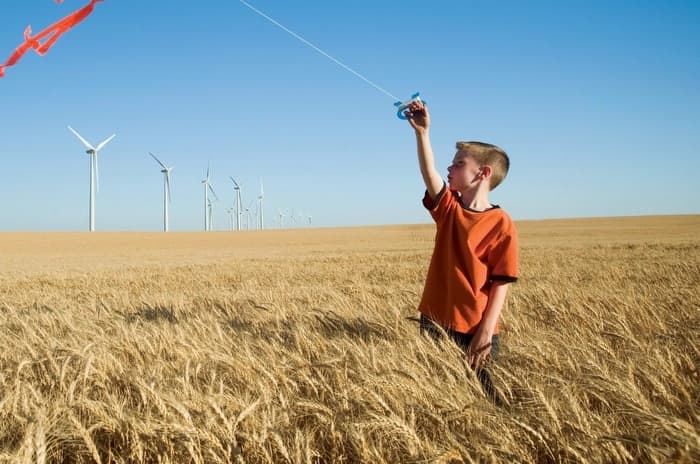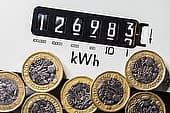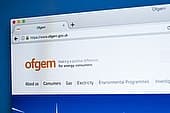Home > Energy > News > E.On launch Clean Energy renewable tariff
E.On launch Clean Energy renewable tariff
E.On have launched a new one-year fixed tariff supplying energy bought from 100% renewable energy sources, with the supplier claiming that it's the cheapest renewable tariff sold by "major providers".

Named E.On Clean Energy, the tariff is available only to customers who agree to receive digital bills and who pay via Direct Debit.
It's set to cost £1,064 for the "average" customer, whose energy consumption will be 100% matched by renewable energy guarantees of origin (REGOs) and green gas certificates (GCC).
And while this might make it more expensive than the cheapest (non-renewable) fixed tariffs currently on the market, the continued growth in renewable energy use is causing green fuel prices to shrink with every passing year.
Clean Energy
Are green deals good value?
Fixed deals: worth the time?
How to improve your energy efficiency
Available now, the E.On Clean Energy tariff claims to be different from other green tariffs on the market insofar as E.On guarantee that 100% of the energy customers use is either generated or matched by renewable output.
That E.On can provide this stems from how the provider is the third largest operator of offshore wind farms in the world. And in the UK alone, they own 16 onshore and five offshore wind farms, as well as two biomass power plants and a 30% share in London Array, which is the globe's biggest offshore wind farm currently in operation.
With this capacity they're able to supply renewable energy to their customers, who they claim have an increasing appetite for green fuel, with E.On's own research finding that 40% of their customers would be interested in a renewable tariff.
And it's largely for this reason that they've launched Green Energy, with their Managing Director of Residential, Chris Lovatt, having the following to say:
"At E.ON we're committed to developing sustainable solutions for our customers' homes and this tariff gives our customers the choice to take a tariff which matches customer's energy consumption with energy from a renewable source".
Other deals
Of course, the slight downside of easing the climatological burden on Mother Earth is that it comes at a premium, with the average price for both fuels on the tariff coming in at £1,064.
This compares unfavourably to the (non-renewable) one-year E.On Saver tariff they also offer customers, which comes in at £953 over the 12 months.
Similarly, the other members of the Big Six providers offer the following one-year(ish) fixed tariffs, although some are actually a bit more expensive over 12 months than E.On's Clean Energy deal.
| Tariff | Price (12 months) |
|---|---|
| British Gas HomeEnergy Capped Nov 2018 | £1,099.58 |
| EDF Online Saver Oct18v2 | £1,060.96 |
| npower Online Price Fix October 2018 | £890.96 |
| Scottish Power Online Fixed Saver January 2019 | £1,050.30 |
| SSE 1 Year Fixed v12 | £1,098.90 |
Yet even if it isn't cheaper than some non-renewable deals, the E.On Clean Energy tariff is reportedly the cheapest renewable tariff offered by all the major suppliers.
This claim, however, doesn't stand up so well when the tariff is compared to those of certain smaller suppliers. In fact, npower's Cleaner Energy Fix October 2019 tariff may be cheaper than E.On's Clean Energy deal depending on where customers are, since our calculations - which were based on the same Ofgem average consumption figures E.On used - put the 12-month average cost at £1,013.74.
Added to this, smaller provider Tonik Energy have their Positively Green one-year fixed tariff, which currently stands at £854 on average for one year.
Similarly, Octopus Energy - who recently launched an innovative daily "tracker" tariff - have their Super Green Octopus tariff at about £990.40 for 12 months.
Gradual progress
Yet in light of how the above renewable tariffs aren't perhaps as cheap as some might hope, the question remains as to when exactly renewable energy will become enticing enough in terms of price for most customers to be drawn to it.
Well, as we've discussed in a previous article, energy from green sources currently made up 26.6% of the UK's diet in the first quarter of 2017.
While this figure represents a 1% growth over 2016, it means that renewable energy isn't perhaps being generated on the massive scale that would drive the costs of its production down and enable providers to make enough savings.
However, there are signs that green energy is becoming cheaper as the technology behind it progresses, with global capacity increasing in 2016 from 127.5GW to 138.5GW at the same time as costs decreased by 23%.
This decrease in costs is encouraging providers to invest in greater capacity, with Energy UK calculating that 30% of the UK's electricity will come from green sources by 2020, despite government inconsistency over the UK's energy future arguably slowing down such progress.
And this all means that, although renewable energy isn't amazingly cheap at the moment, it will only become even cheaper as the years progress, which will mean more tariffs such as E.On's Clean Energy.
Get insider tips and the latest offers in our newsletter

We are independent of all of the products and services we compare.

We order our comparison tables by price or feature and never by referral revenue.

We donate at least 5% of our profits to charity, and we aim to be climate positive.
Latest News

2 January 2024
Energy prices increase by 5%
23 November 2023
Energy price cap to rise 5% in January 2024
24 October 2023
Energy companies must do more to support customers

